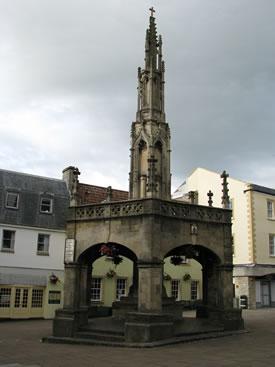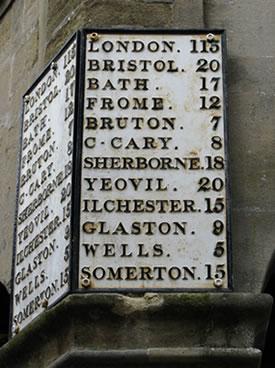Where am I?
From the information you are asked to work out where the picture was taken. Is there too much information? How accurate can your answer be?
Problem
On a weekend break a short while ago I saw this market cross.

On the side perhaps you can see that it has a plaque with distances to local and more distant towns:

Where was I?
What is the minimum amount of information you need to know where I was? Is some of the information redundant?
Is some of the information more useful than other parts?
How accurate can you be about exactly where I was from the distances that are given?
Then why not think about the following questions:
Why has someone bothered to include so much information?
What can you find out about this place?
Can you make up similar problems of your own?
Student Solutions
Shepton Mallet in Somerset
Teachers' Resources
Why do this problem?
This problem encourages students to apply simple loci and the use of scales to a real context. It can be used to focus on identification of necessary and redundant information, accuracy and methods of measurement and representing information. There is also a great opportunity to work with the Geography department.
Possible approach
Ask groups to prepare posters of their findings to dispaly on the board,or create their own examples of similar problems based on a local, national or international scale. They shoulddicuss levels of accuracy as the scale at which they work increases or decreases.
Key questions
Possible extension
Students create problems of their own. Use local geography or even the school buildings themselves to pose similar problems. Why not use these as the basis of a bank of problems for other students to try?
Possible support
